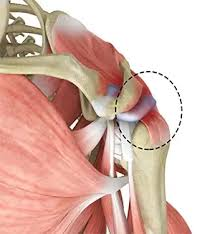- Published Date: 16-04-2025

Rotator cuff injuries can disrupt daily life and emotional well-being. "Beyond the Tears: A Guide to Rotator Cuff Repair and Recovery" is a valuable resource that addresses the physical pain and emotional challenges that come with these injuries. This comprehensive guide empowers readers to understand their condition, navigate treatment options, and stay motivated throughout recovery.
The rotator cuff is a group of four muscles and tendons that surround the shoulder joint. These muscles — supraspinatus, infraspinatus, teres minor, and subscapularis — work together to keep the head of your upper arm bone firmly within the shallow socket of the shoulder. They are responsible for arm elevation, rotation, and maintaining joint stability during movement.
Rotator cuff injuries often result from two main causes: acute trauma, such as a sudden fall or lifting something too heavy, and chronic overuse, especially in people involved in repetitive overhead movements, like athletes, painters, or warehouse workers.
1. Tendinitis
This occurs when the tendons in the rotator cuff become inflamed due to overuse or repetitive strain. Symptoms include a dull ache in the shoulder, tenderness, and difficulty sleeping on the affected side.
2. Bursitis
The small fluid-filled sacs (bursa) that cushion the rotator cuff tendons may become irritated or inflamed, resulting in shoulder pain and stiffness.
3. Partial and Full-Thickness Tears
A partial tear involves damage to the tendon but doesn’t completely sever it. A full-thickness tear means the tendon has been completely torn away from the bone. These injuries can significantly impair shoulder function and often require surgical repair.
Rotator cuff injuries typically manifest as:
These symptoms may develop gradually or suddenly, depending on the type and cause of the injury.
Most minor to moderate rotator cuff injuries respond well to conservative care, including:
When symptoms persist despite conservative management or in the case of a full-thickness tear, surgery may be necessary. Techniques include:
Surgical procedures aim to reattach the torn tendon to the bone, relieve pain, and restore function.
Recovery, especially after surgery, is not instant. It often spans 4 to 6 months or more, depending on the severity of the tear and the individual’s commitment to rehabilitation. A typical recovery plan includes:
Recovery can feel slow, with progress sometimes marked by setbacks. This guide reminds readers that healing is a process, and staying committed to the plan leads to better outcomes.
Rotator cuff injuries don’t just affect the body — they impact the mind. Being unable to perform simple tasks or participate in regular activities can cause frustration, anxiety, and sadness.
This guide offers strategies for emotional resilience:
Acknowledging and addressing these emotions is just as important as physical therapy. A positive mindset can greatly enhance the recovery experience.
“Beyond the Tears” includes real testimonials from people who have lived through rotator cuff injuries. Whether it's an athlete returning to the field or an office worker reclaiming normalcy, their stories show that recovery is possible.
Reading about their struggles, setbacks, and ultimate triumphs helps current patients feel less alone. These stories offer hope and practical insights into overcoming obstacles during the healing process.
Prevention is always better than cure. The guide outlines practical steps to avoid future injuries:
Incorporating these habits into your daily routine can lower the risk of recurring shoulder problems.
Many people ignore early signs of discomfort, thinking the pain will go away. However, early diagnosis and treatment can make a big difference. If you experience shoulder pain or weakness that lasts more than a few days, it's important to seek medical attention.
Recognizing issues early and acting on them prevents minor problems from becoming major injuries.
"Beyond the Tears" goes beyond just medical facts. It looks at rotator cuff injuries from all angles — physical, emotional, and personal. Whether you're at the beginning of your injury, in the middle of rehab, or supporting a loved one through their recovery, this guide provides the knowledge, encouragement, and practical advice needed to move forward.
Recovery may be long and challenging, but with the right information and mindset, you can regain strength, confidence, and control over your life.